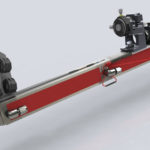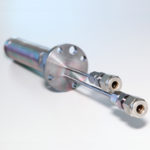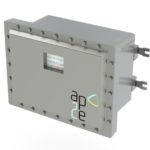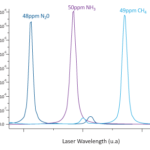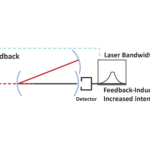Cemgas 5000 N2O Laser Analyzer
By AP2E
The CEMGAS 5000 N2O Laser Analyzer features a patented Optical Feedback Cavity Enhanced Absorption Spectroscopy (OFCEAS) IR technology which allows for enhanced specificity, selectivity, accuracy and stability. With response times less than 2 seconds and zero drift this laser analyzer is a complete, reliable, robust, low-cost and easy-to-use solution for low-level N2O analysis in pure gas.
Overview
Why choose the CEMGAS 5000 N2O Laser Analyzer?
With decreased audiovisual performance occurring when subjects were exposed to 50 ppm, the N2O Laser Analyzer’s minimum Level of Detection (LOD) of 2 ppb allows for atmospheric safety measures to be met and exceeded.
The OFCEAS IR technology associated with low-pressure sampling provides exceptional selectivity, enabling simultaneous multi-component measurements without interferences, regardless of the matrix.
Its patented low-pressure sampling system allows for low-cost installation and low flow rates (3-9 L/h) without degrading response time.
Pre-calibrated for your application this analyzer contains no optical moving parts and was built strictly for industrial and on-board mobile applications. It includes a touch screen interface and on-board PC for both local and remote control, allowing for off site measurements. The interface also features real time display/recording of results.
Contact a Cemtek representative today to discuss how the N2O Laser Analyzer could benefit your company by accurately and safely monitoring it’s nitrous oxide emissions.
What is N2O and why does it need to be measured?
Nitrous oxide, commonly known as laughing gas, is a colorless, odorless, sweet tasting gas that is commonly used as an anesthetic and analgesic. A byproduct of fuel combustion, N2O can also be generated during the production of nitric acid, which is used to make synthetic commercial fertilizer, and in the production of adipic acid, which is used to make fibers, like nylon, and other synthetic products.
In 2014 the EPA reported that nitrous oxide accounted for about 5.9% of all U.S. greenhouse gas emissions from human activities and the impact of 1 pound of N2O on warming the atmosphere is almost 300 times that of 1 pound of carbon dioxide. N2O is predicted to be the single most important ozone-depleting emission in the twenty-first century and must be regulated accordingly.
At room temperature, N2O is unreactive with most substances and has therefore been approved for use as a food additive, specifically as an aerosol spray propellant. Cooking sprays and whipped cream canisters contain N2O and it is also found in snack foods (like potato chips) where it is used as an inert gas to displace oxygen and inhibit bacterial growth.
The ability of the gas to displace oxygen is one of the reasons it is dangerous as it can cause death by asphyxiation. Euphoria, drowsiness, headache, dizziness and unconsciousness are symptoms of N2O exposure. A person who is rendered unconscious by N2O is likely to stop breathing within a few seconds due to a depressed central nervous system and if he/she continues to inhale the gas, will most likely die.
Though not classifiable as a carcinogenic, long term exposure of nitrous oxide has been linked to adverse reproductive and central nervous system (CNS) effects. It targets the respiratory system, CNS, peripheral nervous system and reproductive system.
As stated in the OSHA Method ID-166, the National Institute for Occupational Safety and Health (NIOSH) recommended the TWA REL for N2O in workplace atmospheres not exceed 25 ppm regardless of site. This was based on findings that there was decresed audiovisual performance noted when subjects were exposed to 50 ppm of N2O. Proper monitoring of N2O would effectually help retain a safe working environment and avoid short or long term overexposure.
Applications
Dental
Medical
Veterinary
Chemical
Agriculture
Transportation
Fuel




